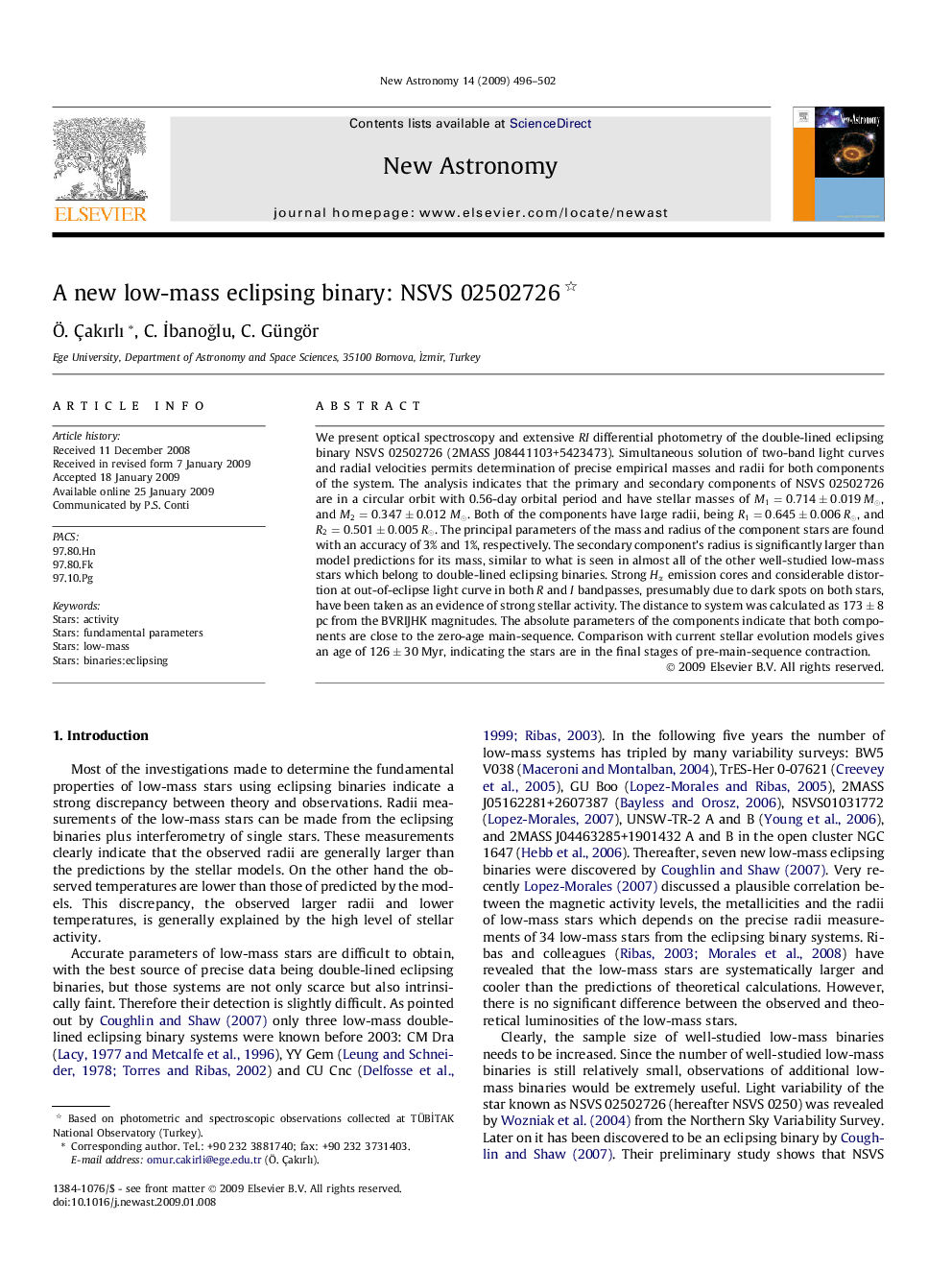| Article ID | Journal | Published Year | Pages | File Type |
|---|---|---|---|---|
| 1779595 | New Astronomy | 2009 | 7 Pages |
We present optical spectroscopy and extensive RI differential photometry of the double-lined eclipsing binary NSVS 02502726 (2MASS J08441103+5423473). Simultaneous solution of two-band light curves and radial velocities permits determination of precise empirical masses and radii for both components of the system. The analysis indicates that the primary and secondary components of NSVS 02502726 are in a circular orbit with 0.56-day orbital period and have stellar masses of M1=0.714±0.019M⊙, and M2=0.347±0.012M⊙. Both of the components have large radii, being R1=0.645±0.006R⊙, and R2=0.501±0.005R⊙. The principal parameters of the mass and radius of the component stars are found with an accuracy of 3% and 1%, respectively. The secondary component’s radius is significantly larger than model predictions for its mass, similar to what is seen in almost all of the other well-studied low-mass stars which belong to double-lined eclipsing binaries. Strong HαHα emission cores and considerable distortion at out-of-eclipse light curve in both R and I bandpasses, presumably due to dark spots on both stars, have been taken as an evidence of strong stellar activity. The distance to system was calculated as 173±8173±8 pc from the BVRIJHK magnitudes. The absolute parameters of the components indicate that both components are close to the zero-age main-sequence. Comparison with current stellar evolution models gives an age of 126±30126±30 Myr, indicating the stars are in the final stages of pre-main-sequence contraction.
